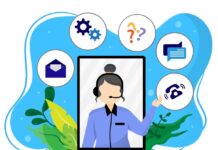Are you a great communicator? Are you worried about the future? Learn how to become a uniquely gifted communicator and take advantage of advancements in AI and NLP to power up your skills.
It doesn’t take a genius, anyone with an IQ above 140, to tell you that times are changing. Times have changed since Turing invented the modern computer in 1936, and Hideo Yamachito and Konrad Zuse produced the first electronic computer in 1950.
Little did we human communicators know that over 70 years later, AI and natural language processing would be the driving forces behind human-to-machine interactions changing communication forever.
AI and natural language processing (NLP) is changing how humans communicate with machines, increasing the accuracy and speed of conversation while reducing misunderstandings.
Companies use NLP to improve customer service by optimizing customer experiences through intelligent, automated systems that can understand and respond to real-time customer requests. In theory, this reduces customer wait times and makes it painless for customers, helping them to get the answers quickly.
In practice, anyone on the other end of a chatbot customer service conversation may decide that AI and natural language processing aren’t working. The bot can’t understand you, and you can’t understand it.
That’s not to say improvements aren’t happening all the time – AI learning is so fast that, eventually, you won’t be able to distinguish between a human and a chatbot. Let’s go back to basics and ask, what is natural language processing?
What is natural language processing or NPL?
Natural language processing, or NLP, is machines’ ability to understand human speech. Artificial Intelligence (AI) allows computers to interact with humans naturally, including understanding what we say and responding with relevant answers (that’s the goal, anyway).
NLP is an essential technology for any organization that deals with communication (comms). Integrating AI and natural language processing has transformed customer interaction by allowing machines to understand human speech and respond with relevant answers.
By understanding language structure, NLP allows machines to interpret meaning from spoken and written language, and analyzing and putting what they have learned into action means that organizations can now connect with their customers efficiently and accurately through automated customer services such as chatbots and virtual assistants.
Organizations are also using AI-driven natural language processing to gain deeper customer insights. By examining customer feedback, they can better understand their target audience and develop strategies to improve the customer experience.
So that’s the official version laid down by learned and worthy tech professionals, but that’s only part of the story. Here’s how AI and NPL work in reality, even if that reality is augmented.
The computer says no
Customer services have always been the butt of comedy shows, from Little Britain to Seinfeld’s ‘The Car Rental’. However, combining AI and NLP transforming communication processes will eventually enhance the customer experience but at the expense of great comedy.
You can’t have everything, or can you?
For those who want a career in communications, marketing, the media, or digital transformation (DX), it is worth looking into a degree or masters course in Arts or an online master’s degree in communications, which can help you stay up to date with the latest trends and technology. Many institutions, such as St Bonaventure University, offer hybrid/online learning which makes gaining qualifications easier than ever before.
An online master’s will give you the skills needed to work within a digital environment, develop creative campaigns that integrate AI and NLP for optimal customer experiences, employ ethical and legal frameworks in your campaigns, understand data analytics to measure the success of your campaigns and use visual and written communication to engage with diverse audiences.
An online master’s degree in communications can help you become an expert in the field with the knowledge necessary to excel in this rapidly evolving digital world.
How can organizations use NLP to improve AI?
Organizations are now using NLP to help improve the accuracy of AI. By analyzing and interpreting large amounts of data, NLP helps organizations understand customer patterns and behavior. Understanding these patterns help companies to personalize their services more effectively and quickly respond to customer needs.
Furthermore, with the help of machine learning technology, organizations can use NLP to build more accurate customer profiles, helping them better understand their customers and improve their services.
Organizations can use natural language processing to automate mundane business tasks like data extraction from emails, forms, documents, and chatbot conversations. Automation eradicates the need for physical data entry and gives organizations more accurate data faster.
In a recent article interestingly titled ‘What if the devil is my guardian angel: ChatGPT as a case study of using chatbots in education,’ the writer discusses the effect of AI, namely ChatGPT, on the communication abilities of students and education.
The ChatGPT effect on communication and education
Speculators summarize that OpenAI, developers of ChatGPT (CGPT), a conversational AI that uses pure, natural language processing and deep learning to produce human-like text, was so good that most communicators felt positive towards its results.
However, academics had several concerns about cheating, truthfulness, and honesty of CGPT. Privacy issues and misleading manipulation were also problems identified among users.
In real terms, this means you can’t take the human element away and that AI is no more up to date than the programmer, no matter how much or how fast the information is provided.
Most AI systems are not updated in real time. Many are reportedly at least two years behind, meaning you can’t rely on AI alone to provide correct data. So, while CGPT may be excellent at prose and can write a song in the voice of Miley Cyrus, complete with tattoo references, it can’t and shouldn’t be relied upon to provide critical information.
That’s why, for most organizations, the key is to use AI and NLP in conjunction with human insight and experience to provide a successful outcome – think of AI as an assistant rather than a line manager.
The future of communication processes to enhance the customer experience
The phrase customer experience is enough to make you want to lie in a darkened room and cry. Interestingly there’s change happening, and the future of comms is moving away from the slick marketing techniques of Facebook back in 2006 to a natural process that treats the customers like a person and meets their needs in real time.
The future of comms is all about AI, NLP, machine learning, natural language processing, and bots that understand customers better than humans can. In other words, the customer experience will be more like a conversation with an intelligent bot than anything else.
We are far from the perfect AI conversation, and most humans know when they are conversing with a machine, even when the customer actively looks for AI red flags. If there isn’t a Twitter account for funny AI customer service conversations, someone should create one.
AI is not going to take your job
Except it is – according to Goldman Sachs, the investment bank, AI will take up to 300 million jobs globally, and it’s likely that if you work in admin or engineering or you’re a solicitor or an architect, AI has earmarked your job to take over one way or another.
Of course, it’s not AI in itself that will make those jobs redundant. It’s the technology; AI will streamline processes, not make them obsolete. It’s the phrase, one way or another, that’s crucial here. AI is unlikely to remove the need for a solicitor, engineer, or architect, but it will improve those professionals’ services.
Admin, however, is consigned to the hungry AI bin but don’t worry, if you’re a professional comms person, there will still be plenty of room for you.
So AI isn’t going to take your job. It will change your career and how you live your life. Think of it this way, more jobs that don’t exist right now will evolve to step in and fill the void.
On a more positive note, in the same article, GS says AI and related tech will increase GDP globally by 7%.
How to future-proof yourself against the rise of the machine
Don’t be predictable, even though the human brain loves predictability (Friday is fish and chip day). AI doesn’t create original ideas or generate original insights; it guesses using probability, the next word or sentence, making everything beige in the process.
Developing soft skills that AI can only dream of – means communicating with your gut (and good grammar). Humans are made with genuine empathy and emotion, so you should use your skills to set yourself apart from the machine.
AI will never take over connection-based communications. Machines cannot interview a marathon runner who has raised money for charity – originality will save your job.
Finding and using original material that does not appear online creates a newness that beats AI hands down. In the words of Coco Chanel, although paraphrased for originality, ‘to be irreplaceable you must be different,’ or ‘a substandard original is better than a brilliant imitation,’ that one must have come from a copywriter.
Homogenization of the masses
The human animal is easily influenced, and organizations have been collecting our data for years. They know what you had for lunch (probably because you posted it on Instagram) but, more importantly, what you’re likely to buy.
Recently consumers have turned their backs on unsolicited emails or spam in favor of human influencers and, more recently anti-influencers. Customers crave real people reviewing real things in real time.
AI has tried its hand at advertising with VR-influencing digital models Lil Miquela and Shuda, who reportedly have millions of followers on Instagram advertising clothes and products for Chanel, amongst others. AI models are cheaper to feed and don’t turn up late for fashion shows.
The art world has welcomed AI and VR technology in the form of Ai-Da, the first creative robot. Ai-Da draws while she chats. Her robotic drawing arm was the concept of Salah Al Abd and Ziad Abass. Lucy Seal gave Ai-Da a human face, while Alex Kafoussias and Tim Milward brought her to life through digital art and 3D design.
Seal, Kafoussias, and Milward designed Ai-Da to ask questions about our perception of human identity in a digital age.
As AL and NPL develop and progress, there will be less beige and more Elephant’s Breath. AI is growing in many areas with the potential to provide smart customer recommendations, but it’s still a long way from understanding the nuances of human emotion and behavior.
AI can quickly crunch data to identify customer preferences on what they are likely to buy, but it cannot necessarily determine why they make that choice, such as their emotional connection with the product.
Can AI be trusted?
In 2018 a survey carried out by IPSOS revealed that only 23% of those who replied trusted AI. This news won’t surprise you. 2018 was five years ago, and technology has changed. However, in 2021 36% of applicants decided they could trust AI to prevent fraud.
Tech looking after e-commerce is a logical step forward. Another survey suggested that countries in the West were more reluctant to trust AI than Brazil, China, and South Africa.
While people closer to home are reluctant to accept AI, their mistrust is not without good reason – look at Tesla and Elon Musk’s self-driving car or, should we say, the AI assistant that was involved in an accident or the smart speakers and phones that records your conversations for commercial purposes. These newsworthy examples do nothing for AI’s image.
The way organizations can make AI more acceptable and trustworthy is to promote the human element and continue to amalgamate AI and natural language processes.
What does the future hold for technology?
Well, if we knew that, we would need to write about it. We would be on board, surfing the wave of new tech, but instead, it’s likely to look like collaborations between the cloud and software as a service.
More data mining and streamlining through AI and machine learning (that’s NPL again) means less meat-based spamming and more targeted campaigns on multi-channels, which means there’s no safe space anymore for you and me.
Banning TikTok won’t help, as short-form videos are the most popular way to reach consumers. Say what you will about the Tok, the combination of technology and reading the consumer has to be the cleverest bit of new marketing ever invented or at least in this millennium.
There will be a move away from emails. These are dead (and not just because of the content), as are text messages.
As for physical tech, teleporting is still a fantasy, but one that Elon is praying with self-driving cars will become a reality (no more tedious Uber conversations), and the Metaverse will go the way of 3D glasses – a good idea that never really made the grade.
What communication skills do you need to survive in the modern world?
Given everything you know about AI and NPL and how communications are heading, we think it’s only fitting to get an online master’s degree in communications to equip you with the tools needed to subsist and thrive in the modern world.
You need to be able to process conceptually, develop creative ideas, identify communication problems, create strategic plans, use data analytics, and create engaging visuals across all major media platforms and show professional readiness.
Let’s take each skill individually and see how they relate to modern communications, particularly natural language processing.
Strategic thinking – your ability to identify communication problems associated with AI and create strategic plans will help you create content tailored to specific audiences, meaning your content is more likely to engage customers.
Visual and written communication – To be successful, you need to create visuals and written content that captures your audience’s attention and conveys the message clearly, using language and visuals that are specific to the audience.
Conceptual thinking – Your ability to think creatively is crucial to developing original content ideas. AI can help here too, but your creative thinking will make your content stand out from the crowd. Remember, your input, not AI, will create great content.
Professional readiness – You must be able to understand diverse audiences and messages to tailor your content. AI can help you to develop a deeper understanding of the target audience, but your ability to communicate with them will be key.
An ability to read between the lines – AI cannot measure sentiment and emotion, so you must be able to read between the lines and decode what is the essential information and what is unnecessary.
Finally, learn to emphasize integrity, a skill that only the human brain can really master and the best skill of them all when it comes to employability.
With an online master’s degree in communications, you’ll be armed and ready to take on a world of advanced commercial communication which will enable you to find employment combining natural language processing and AI with communication skills essential for survival in today’s digital world.





